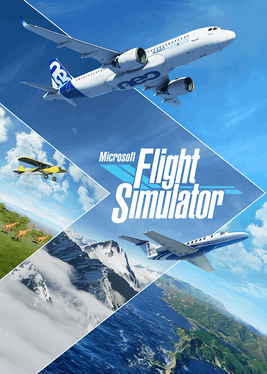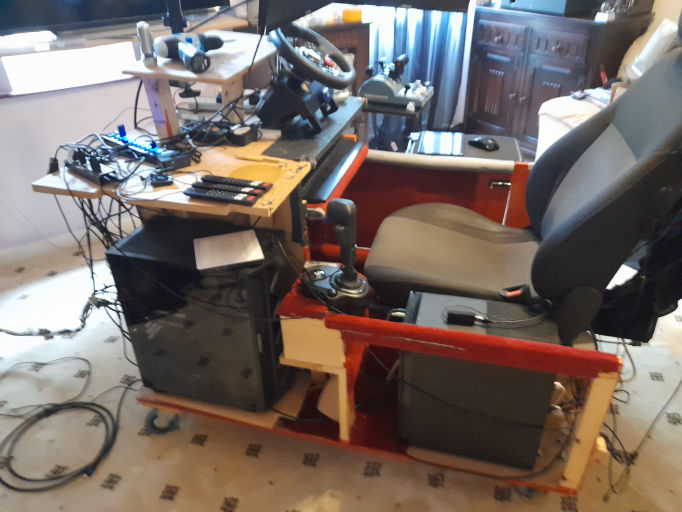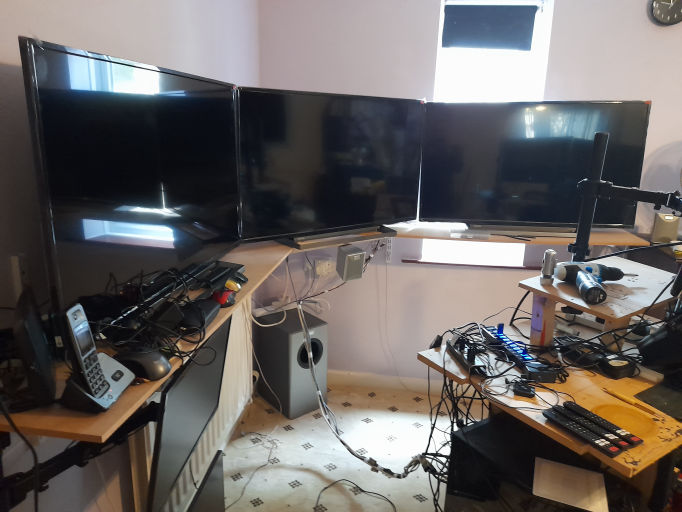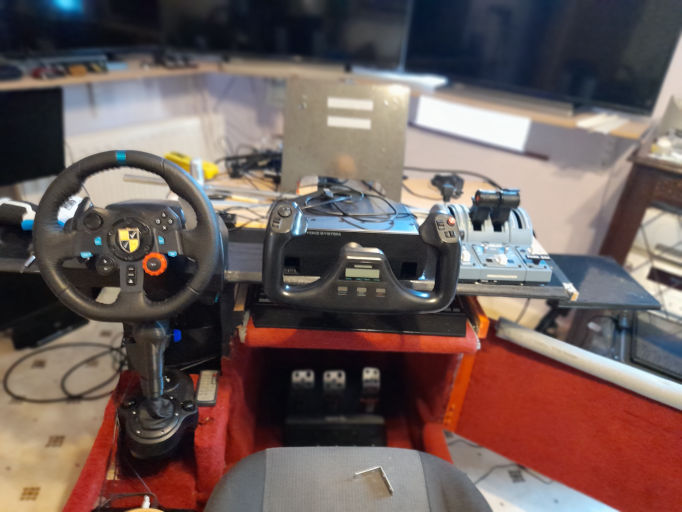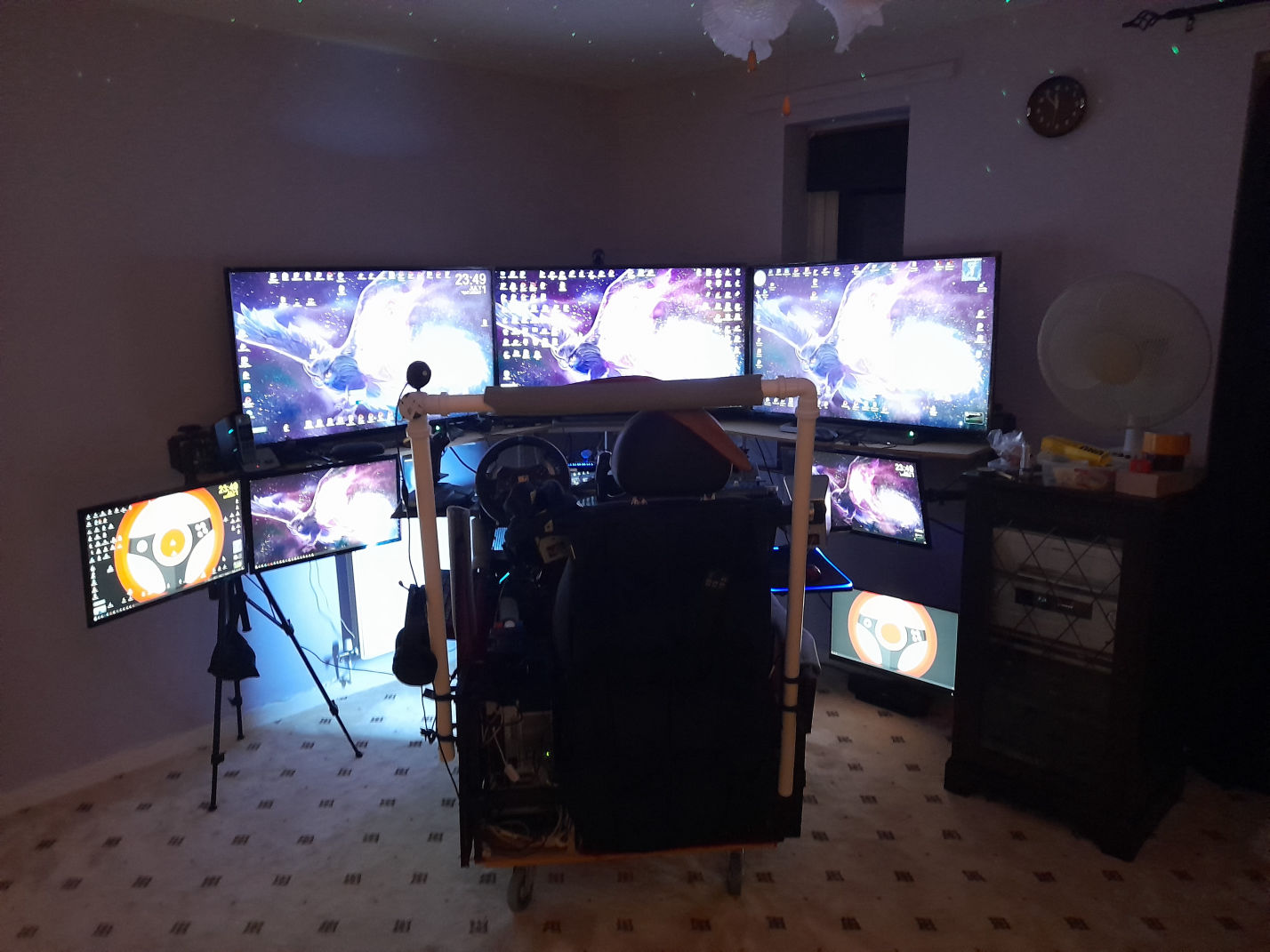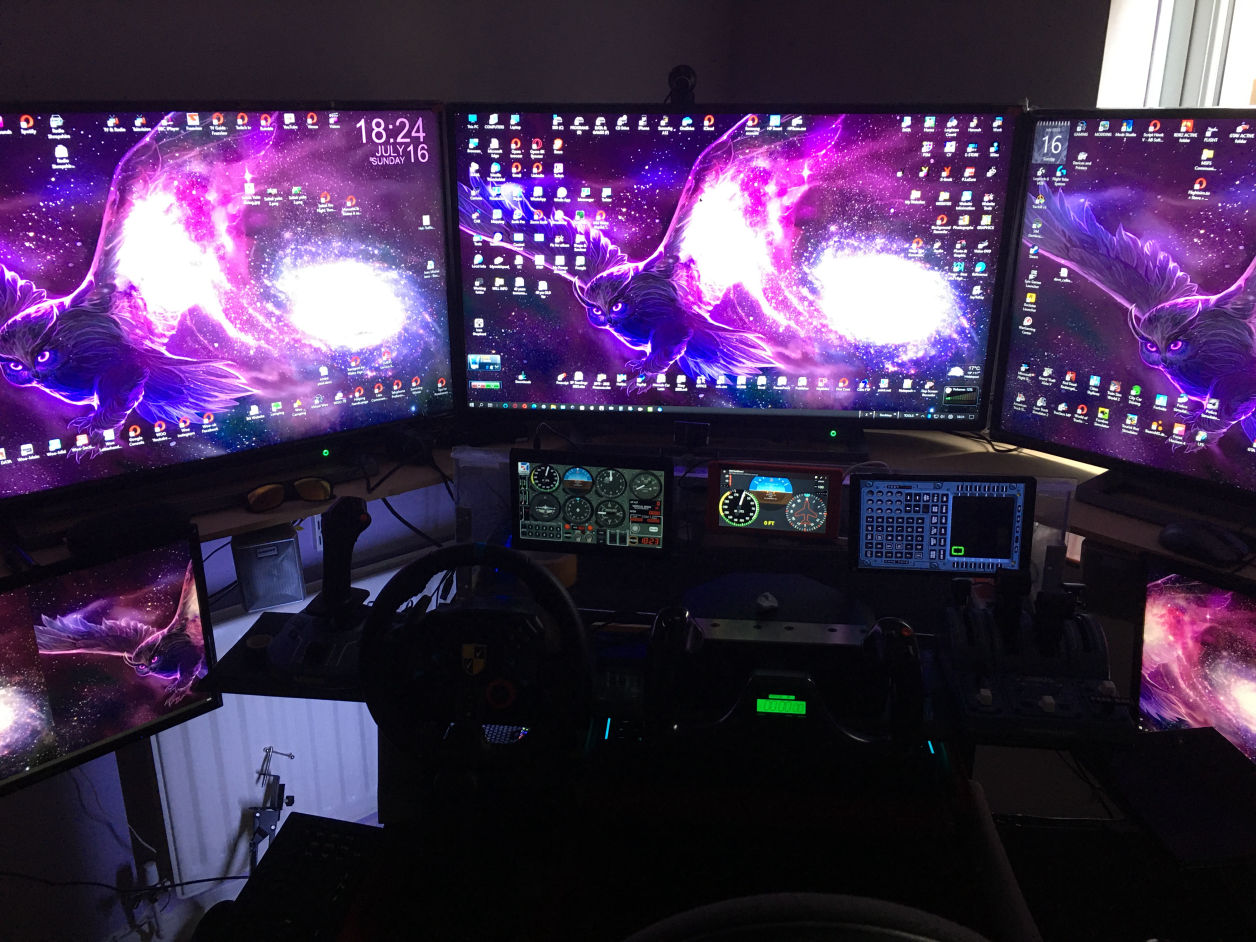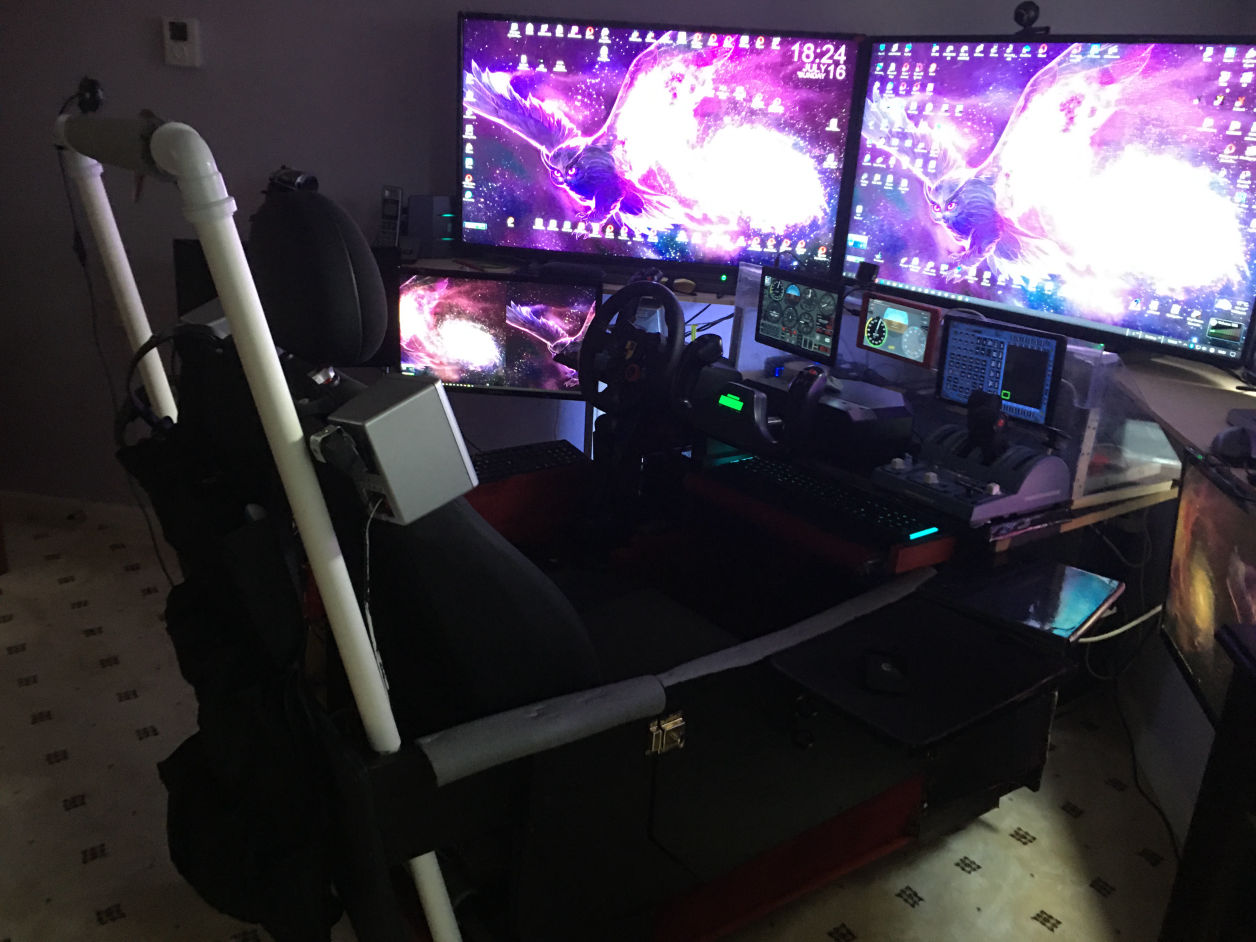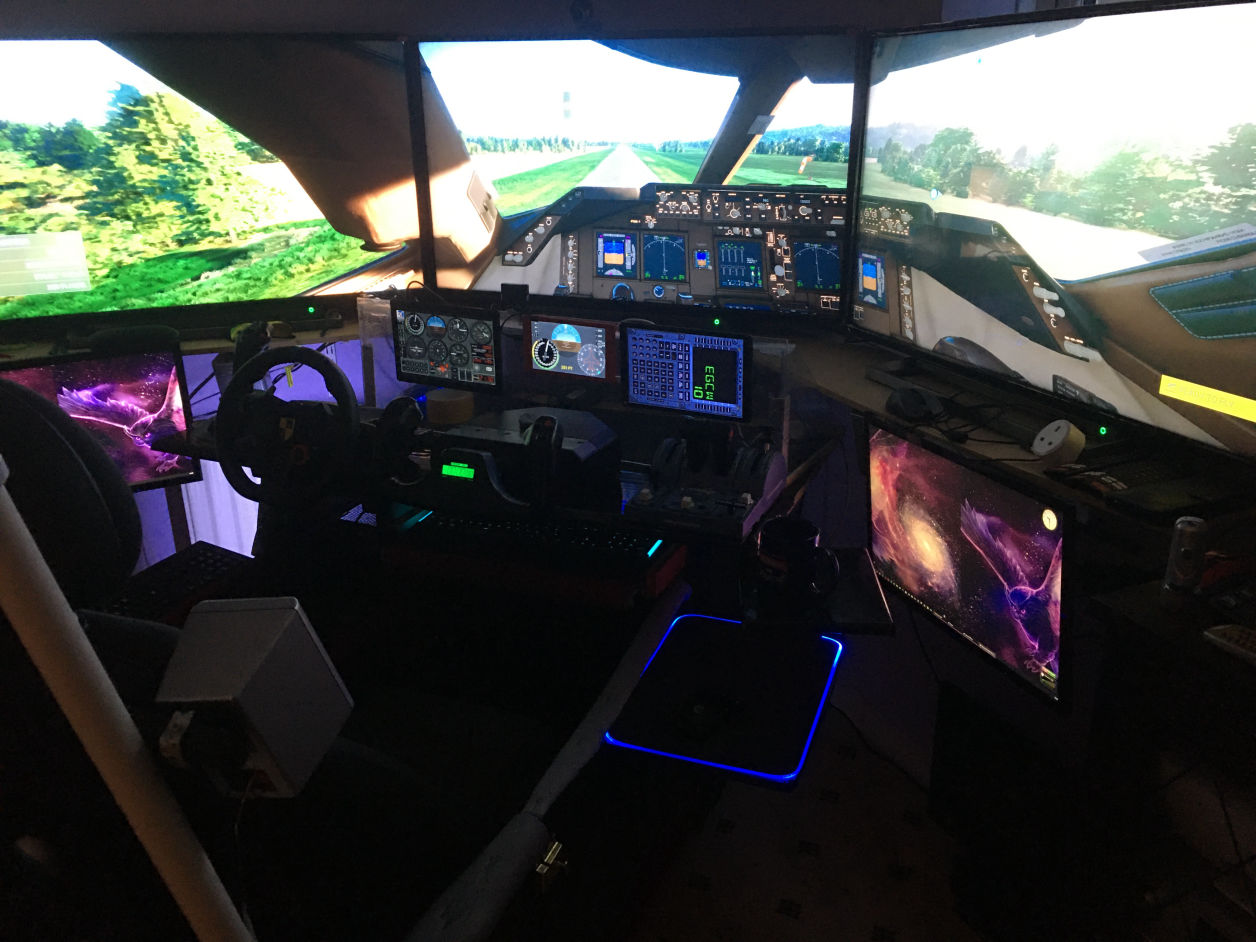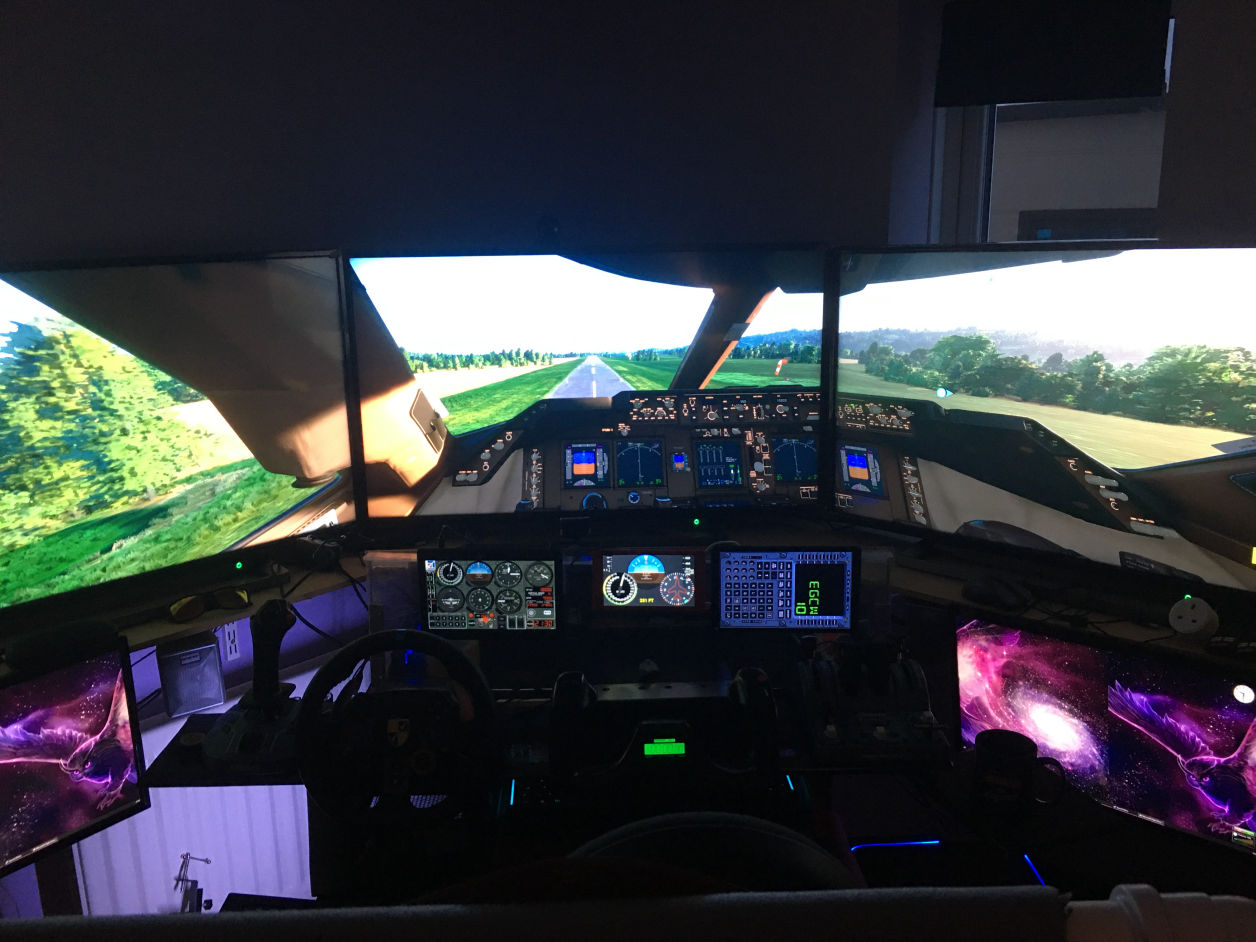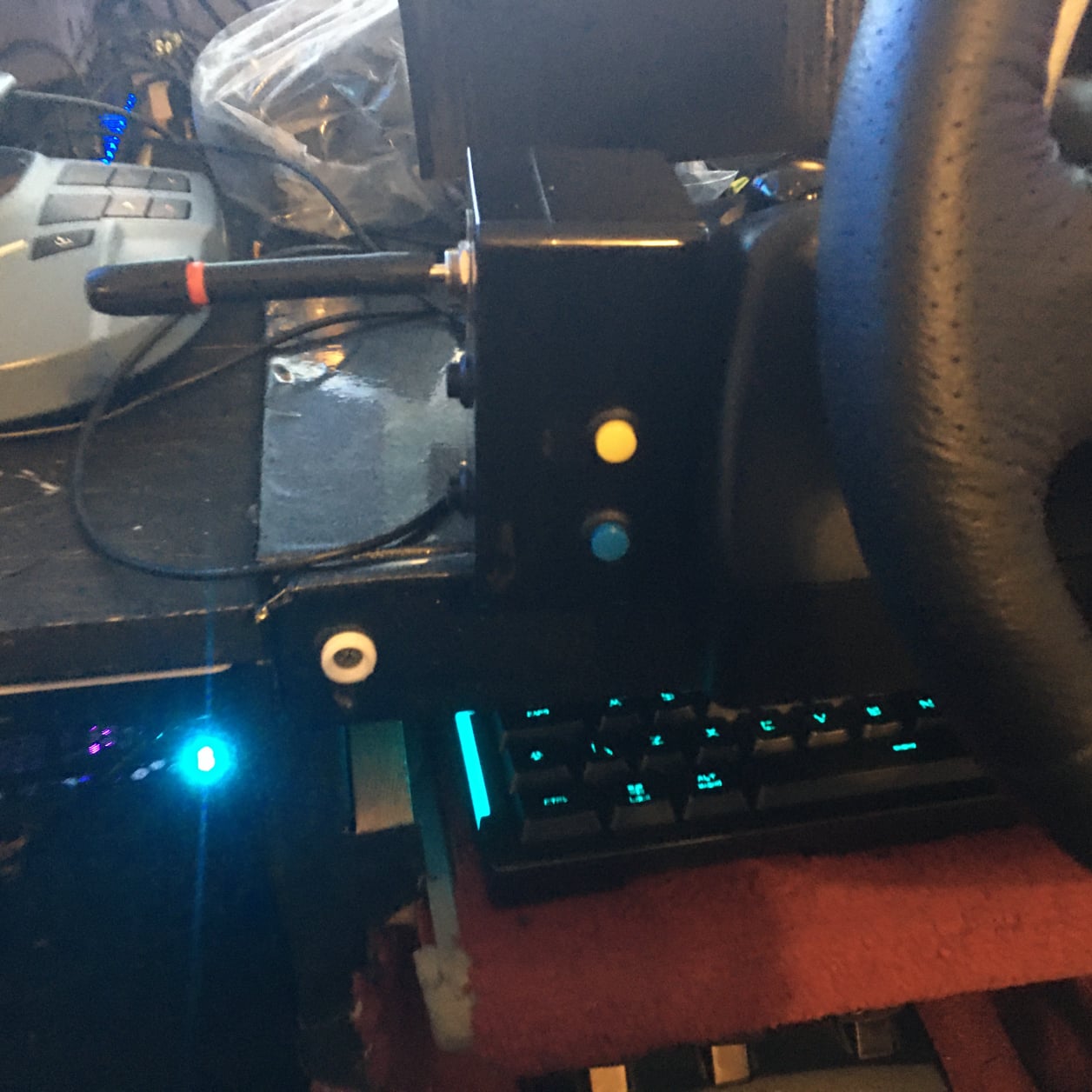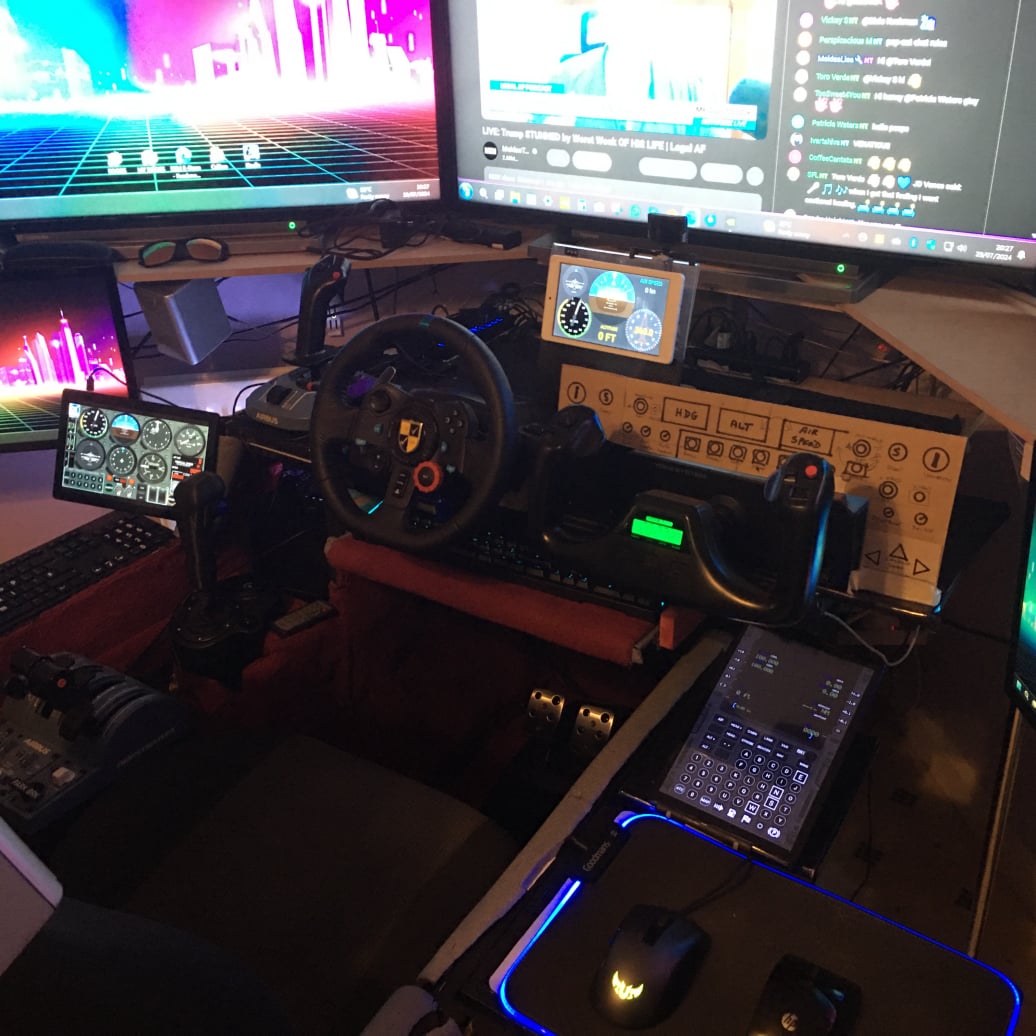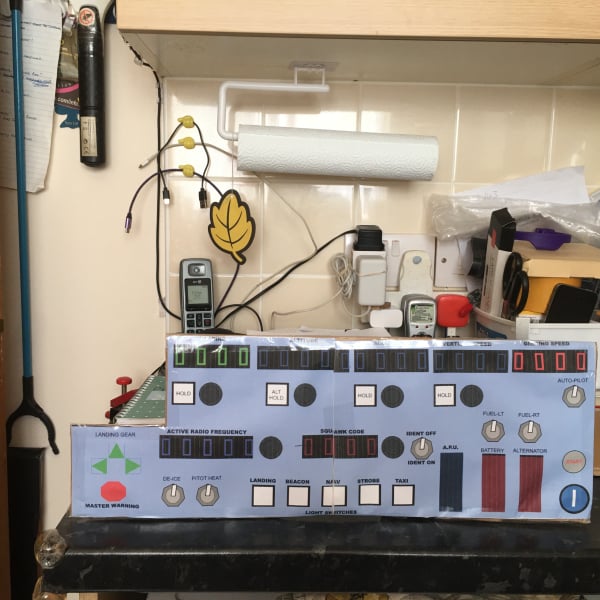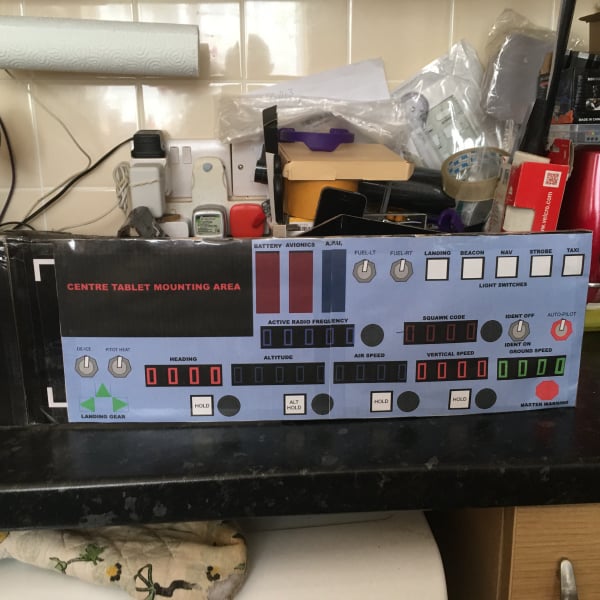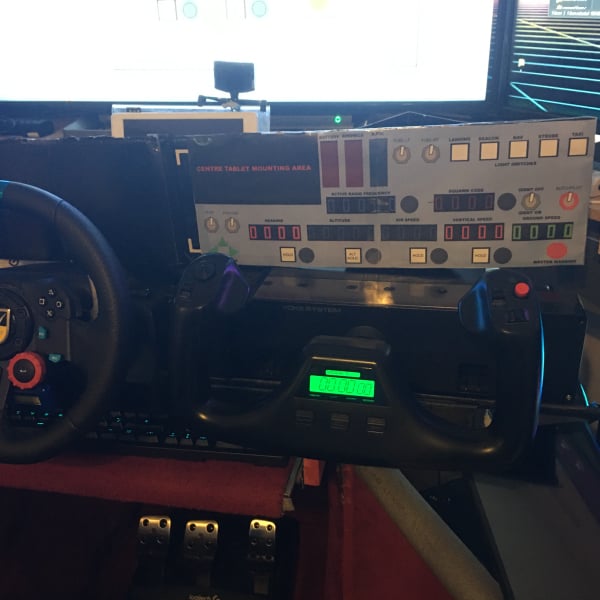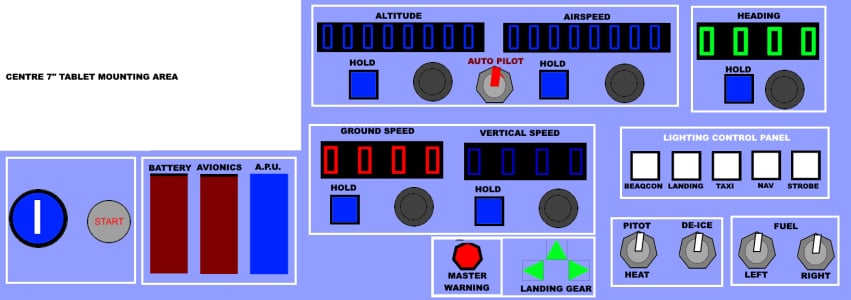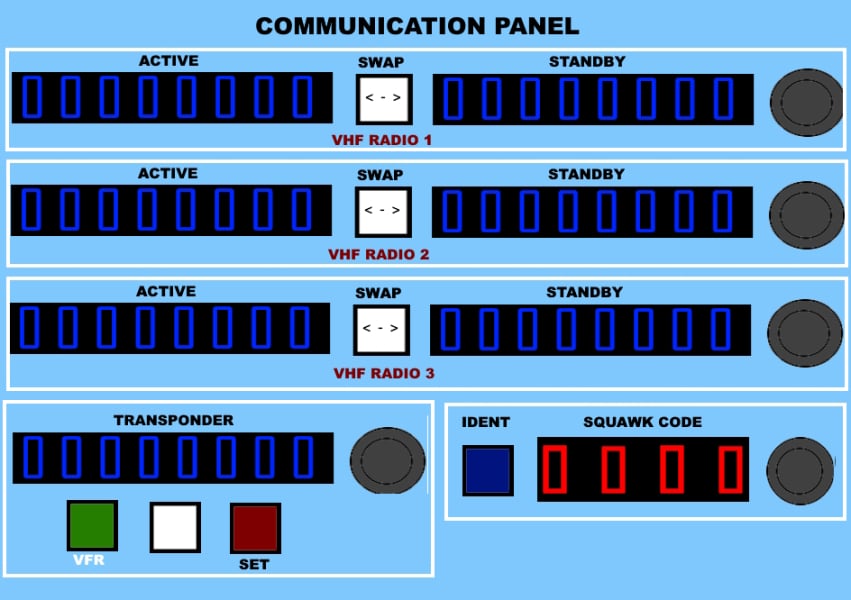So why do I need to make changes to my rig?
and what do I need now?
Simulation Gaming is not the only thing I use my computer for, therefore whatever I end up building needs to enable me to continue to operate it for ALL my other tasks.
I suffer a lot with severe back pain, which requires me to sit upright. I spend many hours creating and maintaining many websites, and I am also a published author and spend many hours on the keyboard writing. Therefore posture was a very important factor to consider, and balancing a keyboard across my knees was just not going to work.
The above still very much applies, I need the rig for all that I needed it for before, but now it has a whole new set of needs.
Driving a simulated vehicle, whether it a Car, Coach or Articulated Truck basically needs three things, a steering wheel, a gearstick, and a set of pedals. However when it comes to flying an aircraft these controllers are quite useless. The controls used for flying require a totally different style, either a wheel type controller that has extra ranges of movement, or the use of a joystick, or both. The pedals used are also very different, they are not used as a throttle or clutch as this is normally done with levers, instead they are used for steering along with braking.
The type of aircraft flown too can require different controls, a Helicopter is again very different from an aeroplane
************
The previous cockpit did well to meet my original needs, but just did not have the room for all these new controllers, I could not afford toi start from scratch and totally rebuild it, nor did I have the room to make it any larger. so I realised that I would have to redesign it, somehow incorporate all the new controllers with all what I had before, but without having to totally dismantle one system so as to be able to use the other.
This required having the original normal Logitech driving wheel alongside a new push-pull style flight yoke and the new throttle quadrant, but it had to be quickly moveable so that I could access both without changing my seating position.
Before any die-hard flight simmers comment on the layout, I do know that certain controls are normally in set positions, That a 'Captain' sits on the left and uses a flight stick with his left hand, and the throttle levers with his right. However I am right-handed, and it is my right hand that I use for precision, e.g using a mouse, steering, operating buttons etc. Due to my several previous strokes I do have a little weakness in my Left side, and because of this, and the fact that I also have the driving controls present, I could not mimic the exact layout of a cockpit, but placed the controls in positions which best suited to me.
I also intend to fly a variation of aircraft, plane and helicopter, commercial and military, and so needed the ability to use a flight style joystick with either hand, meaning that instead of being mounted to one side as in a traditional modern commercial aircraft, it needed to be fixed centrally.
New switch panels and instrument dials would be needed too, so new or additional Button-Boxes were also needed.
************
The original cockpit worked extremely well, and with everything built onto and into the unit, it saved a lot of room in an already limited space. It was built on large supermarket style castor wheels for easy movement, as I often needed access to the rear of the computers, plugs and the wiring, and of course for cleaning. But mounting 7 screens, one being a older 40" flat television, along with two computers, various switch panels, a printer, and surround sound system the weight was increasing more and more. It was no longer easily moved by just one person, so a lighter redesign has become necessary.
Due to the advancement in graphics, and the sheer beauty of the scenery in Microsoft's flight simulator, and in other regularly used top-end graphic games such as Red Dead Redemption 2, it was also time to update my monitors. It now needed 4K and not the 1080p of old, and it also needed bigger screens to add to the overall immersion. So an order was placed for three 43" 4K HDR televisions, these were the biggest screens that the corner of my living room could handle, as the larger the screen the further away from them you have to sit. 40" screens would have been suitable and perhaps even better, but it seems that the days of purchasing smaller 4K screen televisions are over, they are no longer sold in the shops, and now start at 43" and go up to a 100+"
These large televisions if mounted as direct replacements, would make moving my cockpit totally impossible. So I needed to separate them from the rig and mount the televisions onto the wall. However mounting a large TV diagonally across a corner is not the easiest thing to do, and my walls are mainly plasterboard/Dry wall, and being quite weak directly mounting adjustable brackets to the wall was a little worrying. Instead I decided to erect two strong long shelves, and create a corner-piece to give extra support to the central angle TV, and used chrome tubes underneath to give extra support and to stop the sagging.
The existing 22" monitors were then refitted using the original mountings, not to the rig itself, but to the shelves so that they hung below, along with the two front and the centre surround sound speakers. This now left the front of the rig clear to redesign the
dashboard area, making room for tablet sized displays and for some of the buttonbox controls. Weight saving would come from removing the high overhead 40" television, and the heavy bass speaker and surround sound amplifier from the front of the unit.
So from here on I will be showing the new build and all the modifications it takes to make work.
